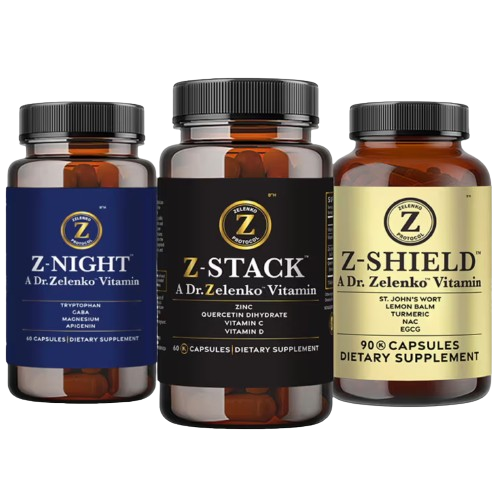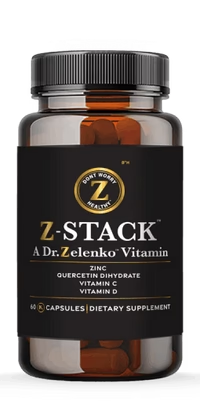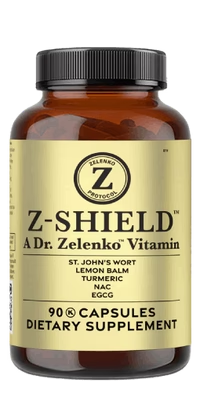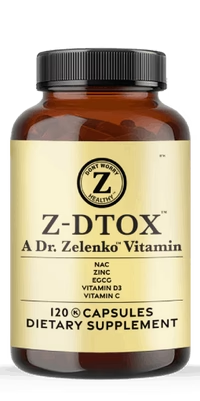You might not be aware that the Zelenko Protocol, often referenced in the context of treating COVID-19, actually hinges on a combination of agents traditionally known for their roles outside of antiviral therapy. Developed by Dr. Vladimir Zelenko, this regimen includes zinc, hydroxychloroquine, and azithromycin, which together are thought to synergize in mitigating inflammation and viral replication. While the protocol has garnered both attention and controversy, its mechanisms and efficacy invite a closer look, particularly as it relates to the body’s inflammatory response. As you consider the intricacies of this approach, you’ll find yourself questioning the conventional boundaries of treatment and perhaps confronting the broader implications for future medical practices. Will the Zelenko Protocol withstand the rigor of scientific scrutiny, or will it prompt a reevaluation of how we address inflammation in viral illnesses? The answers to these questions hold profound significance for healthcare moving forward.
Key Takeaways
- Inflammation plays a vital role in fighting pathogens like SARS-CoV-2 but excessive inflammation can lead to severe complications in COVID-19.
- Managing inflammation is important in treating COVID-19, and the Zelenko Protocol aims to modulate inflammation to prevent severe damage.
- The Zelenko Protocol involves a triple therapy approach consisting of zinc, low-dose hydroxychloroquine, and azithromycin, which work together to combat viral replication and modulate the immune response.
- While a retrospective case series study showed potential benefits of the Zelenko Protocol in reducing hospitalizations and deaths, larger studies and randomized controlled trials are needed to validate these findings and assess its efficacy and safety.
Understanding Inflammation

To grasp the Zelenko Protocol’s impact, it’s crucial to first understand that inflammation is your body’s natural response to infection, playing a pivotal role in your immune system’s ability to fight pathogens like SARS-CoV-2. In the context of coronavirus disease 2019 (COVID-19), caused by the severe acute respiratory syndrome coronavirus 2 (SARS-CoV-2), inflammation can become a double-edged sword. While essential for combatting the virus, excessive inflammation may lead to severe complications. Therefore, managing this response is a delicate balance in treating COVID-19.
The Zelenko Protocol, developed by Dr. Zelenko, is an early treatment approach that gained attention during the pandemic. It involves a combination therapy of zinc, hydroxychloroquine, and azithromycin. Zinc is known to possess antiviral properties, particularly in its ability to inhibit viral replication. Hydroxychloroquine, an antimalarial drug, is thought to act as a zinc ionophore, facilitating zinc’s entry into cells, where it can exert its antiviral effects. Azithromycin, an antibiotic, was included for its potential to treat secondary bacterial infections, which can be a concern in viral illnesses.
The study in New York State analyzed COVID-19 outpatients who received this triple therapy soon after diagnosis. The results were compared with those from a control group of untreated patients. The analysis suggested a potential benefit from the triple therapy, but it also underscored the necessity for larger studies and the publication of comprehensive results to validate these findings.
As you consider the Zelenko Protocol, it’s essential to weigh the evidence methodically. The concept of Risk-Stratified Treatment, where patients are treated based on the severity of their condition, becomes particularly relevant. Combination therapy as an early treatment strategy hinges on the timely modulation of inflammation before it causes severe damage, highlighting the intricate role of inflammation in COVID-19 management.
Dr. Vladimir Zelenko’s Background
Understanding the creator of the Zelenko Protocol is as vital as the treatment’s mechanics; Dr. Vladimir Zelenko’s medical and cultural background shaped his approach to managing COVID-19. Born in Kyiv, Ukrainian SSR, Soviet Union, Zev Zelenko moved to Brooklyn, New York, at a young age and later pursued a career in medicine, earning his degree from the State University of New York at Buffalo.
As a Hasidic Jewish doctor, Zelenko’s treatment recommendations are not just informed by his medical expertise but also by a deep sense of commitment to his community in Monroe, New York. This commitment drove him to seek early treatment options for COVID-19, leading to the formulation of a regimen involving Hydroxychloroquine, Azithromycin, and Zinc.
His Retrospective Case Series Study claimed that this combination could significantly reduce hospitalizations and deaths associated with the virus, proposing a potential Treating Virus Cure during the early stages of the pandemic. However, his advocacy for this protocol, which became widely known as the Zelenko Protocol, was met with mixed reactions.
While some considered it a beacon of hope, others, including health organizations and medical experts, criticized it, citing a lack of robust clinical trials. Nevertheless, Dr. Zelenko’s work has underscored the importance of Early treatment and innovative approaches in the face of a global health crisis.
Components of the Zelenko Protocol

The core of the Zelenko Protocol hinges on a triple therapy approach, combining zinc, low-dose hydroxychloroquine, and azithromycin, tailored to treat patients shortly after a COVID-19 diagnosis. This combination therapy is employed as early treatment in the outpatient setting, aimed at reducing the severity and duration of coronavirus disease symptoms.
You’ll find that the Zelenko Protocol’s foundation is a retrospective case series study involving patients with confirmed SARS-CoV-2 infection. The study’s results indicated that early intervention with this regimen could improve patient outcomes, particularly when initiated close to symptom onset. Additionally, risk-stratified treatment is essential to maximize efficacy while minimizing potential cardiac side effects associated with the drugs used, especially hydroxychloroquine.
Let’s break down the components of the Zelenko Protocol:
| Component | Purpose | Consideration |
|---|---|---|
| Zinc Plus | Acts as an antiviral agent by inhibiting viral replication | Zinc ionophore activity is enhanced by hydroxychloroquine |
| Low-Dose Hydroxychloroquine | Facilitates zinc entry into cells and has immunomodulatory effects | Monitoring for cardiac side effects is necessary |
| Azithromycin | Provides antibacterial coverage and may have antiviral properties | Used cautiously to avoid antibiotic resistance |
In the outpatient study, 372 patients received the Zelenko Protocol while 377 untreated patients served as controls. The analysis demonstrated that treated patients had better outcomes compared to those who did not receive the combination therapy. However, the lack of risk adjustment for the control group is a limitation of the study, underlining the need for further research.
Your role in serving others may involve understanding such protocols and their evidence base. Remember, it’s vital to remain analytical and methodical when considering treatment options for those in your care.
Mechanisms of Action Explained
Delving into the Zelenko Protocol’s mechanisms of action, you’ll find that each component plays a critical role in combating viral replication and modulating the body’s immune response to COVID-19. The retrospective case series from New York State provides a valuable foundation for understanding how this combination therapy can be beneficial when initiated early in the course of the disease in outpatients.
Here are the key mechanisms of action for each component:
- Zinc: It’s well-documented that zinc inhibits the replication of many viruses, including coronaviruses. Zinc ions interfere with the activity of RNA polymerase, an enzyme crucial for viral replication. However, zinc has difficulty entering cells where it can exert its antiviral effects.
- Hydroxychloroquine: This medication acts as a zinc ionophore, facilitating the transport of zinc into cells. By increasing intracellular zinc concentrations, hydroxychloroquine enhances zinc’s ability to disrupt viral replication.
- Azithromycin: As an antimicrobial, azithromycin may offer secondary benefits, such as preventing bacterial superinfections. Additionally, it has been suggested that azithromycin might possess anti-inflammatory properties, which can be valuable in reducing the inflammation associated with COVID-19.
- Combination Therapy: The synergistic effect of this trio is crucial. When used in combination, hydroxychloroquine and zinc work together to inhibit viral replication more effectively, while azithromycin addresses potential secondary bacterial infections and may mitigate inflammation.
The evidence-based approach of the Zelenko Protocol emphasizes the importance of early treatment. The significant reduction in hospitalizations and fewer deaths observed in the treated group, compared to the untreated control group, underscores the potential of this outpatient treatment regimen. By understanding these mechanisms of action, you can appreciate the methodical rationale behind this protocol and its role in the early intervention against COVID-19.
Clinical Evidence and Trials

Numerous studies, including a significant retrospective case series in New York State, have examined the efficacy of the Zelenko Protocol, demonstrating a marked reduction in hospitalizations and deaths among patients treated with the triple therapy of zinc, low-dose hydroxychloroquine, and azithromycin compared to those who went untreated. This study’s main outcome measures were hospitalization and all-cause death, providing critical insights into the protocol’s potential benefits.
You’ll find the study’s methodology was rigorously designed to assess the impact of early treatment with zinc in combination with hydroxychloroquine and azithromycin. The research involved 749 patients, with 372 receiving the triple therapy and 377 serving as a control group. The analysis revealed that treated patients had significantly fewer hospitalizations, underscoring the potential of this combination therapy in an outpatient setting after early treatment.
The retrospective case series highlighted the importance of risk-stratified treatment, suggesting that patients with specific risk profiles may benefit more significantly from the protocol. As a result, the study has paved the way for more extensive clinical trials that can provide randomized, controlled data to validate these findings.
As someone dedicated to serving others, it’s crucial to understand that while the evidence from this study is promising, comprehensive clinical trials are necessary to establish the Zelenko Protocol as a standard of care. Only through methodical, evidence-based research can the medical community ensure that patients receive the most effective treatments to reduce the risk of hospitalization and death from inflammatory conditions like COVID-19.
Expert Opinions and Critiques
While the retrospective case series offers insights into the Zelenko Protocol’s potential, experts have voiced concerns regarding the robustness of its scientific validation. The protocol, which includes the use of Hydroxychloroquine and Azithromycin in combination with Zinc, has drawn particular scrutiny. Your role in serving others necessitates understanding the expert opinions and critiques that inform treatment decisions.
Here are the main points of contention:
- The risk-stratified treatment approach suggested by the Zelenko protocol has not been validated through randomized controlled trials, which are the gold standard for evaluating treatment efficacy.
- Independent public reference data has not widely corroborated the findings from Dr. Zelenko’s Retrospective Case Study, raising questions about reproducibility and generalizability.
- The combination of Zinc Plus Low Dose Hydroxychloroquine, although innovative, lacks sufficient peer-reviewed evidence to confirm its purported benefits and safety profile.
- Creative Commons licensing allows for widespread sharing and critique of the protocol, but does not replace the need for rigorous scientific scrutiny through established biomedical research channels.
When you’re guiding others through their healthcare journeys, it’s essential to weigh these expert opinions against the evidence. The critiques of the Zelenko protocol underscore the necessity of robust clinical trials to establish the veracity of any therapeutic claims. Despite Dr. Zelenko’s assertions, the consensus within the medical community calls for caution, emphasizing treatments backed by rigorous evidence. Your commitment to serving others will be best honored by advocating for and adhering to well-founded medical practices.
Safety Considerations and Side Effects
It’s crucial to consider the potential severe side effects and safety issues associated with the drug combination proposed in the Zelenko Protocol. As you explore the treatment protocol, which includes Zinc Plus Low Dose Hydroxychloroquine and the antibiotic Azithromycin, you must weigh the potential benefits against the risks. While dietary supplements like zinc typically have a favorable safety profile, the concern primarily lies with the medication components.
When evaluating this experimental treatment, it’s necessary to methodically analyze the available data. In some studies, side effects were observed with the combination of Hydroxychloroquine and Azithromycin, raising red flags for health professionals. These side effects range from mild to severe, with potentially serious implications for heart health due to the drugs’ effects on the heart’s rhythm.
Moreover, the added risk of drug interactions cannot be overlooked. When you’re considering a triple regimen, including these drugs, you have to be vigilant about how they may interact with other medications your patients are taking. Safety considerations should be at the forefront of any decision-making process when administering an experimental treatment.
The mixed evidence regarding the effectiveness of the Zelenko Protocol further complicates safety assessments. With tech companies limiting the spread of unsubstantiated claims, you must rely on peer-reviewed studies and official health guidelines to make informed decisions. Ultimately, prioritizing patient safety means thoroughly understanding the potential side effects and ensuring that any treatment is grounded in solid scientific evidence. Your commitment to serving others demands no less than a cautious and evidence-based approach to any new treatment protocol.











